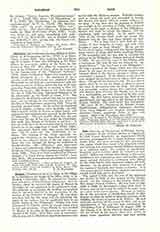

Salamon, LOUIS-SIFFREN-JOSEPH, Bishop of Saint-Flour; b. at Carpentras, October 22, 1759; d. at Saint-Flour, June 11, 1829. After studying law and theology at Avignon, at that time belonging to the Papal States, he was made auditor of the Rota by the favor of Pius VI. This office he resigned for a post in the Parliament of Paris, where he took part in the famous case of the “Diamond Necklace” (1784), which Cardinal de Rohan had purchased for Marie Antoinette (q.v.). He continued to be a member until the Parliament was abolished (1790). Meanwhile he had kept up a correspondence with the cardinal secretary of State, informing him of all that passed in Paris and could be of interest to Pius VI. When the nuncio, Msgr. Dugnani, left Paris towards the end of 1790, the pope appointed Salamon to be his internuncio at the Court of Louis XVI. His devotion to the Church marked him out for persecution, and accordingly he was thrown into prison at the time of the September massacres, 1792. Twice he narrowly escaped death. On his release he wandered about in disguise, acting as vicar Apostolic. In 1801 Msgr. Caprara arrived in France as papal legate, and appointed him administrator general of the dioceses of Normandy. The new pontiff, Pius VII, did not select him for one of the sees under the Concordat, but made him Bishop of Orthozia in partibus. It was not until after the Restoration that he received a French see at the suggestion of Louis XVIII (1820). His episcopate lasted only nine years, but these were full of work for the restoration of religion. The training of the clergy especially engaged his attention, as he lamented the contrast between the cultured priests of the old regime and those who were brought up during the confusion of the Revolution. His “Mémoires” were discovered at Rome and published by Abbé Bridier (“Mémoires inédits de linternonce à Paris pendant la Révolution”, Paris, 1890). They have been translated by Frances Jackson (“A Papal Envoy during the Terror”, London, 1911). His statements are sometimes at variance with established facts.
T. B. SCANNELL

